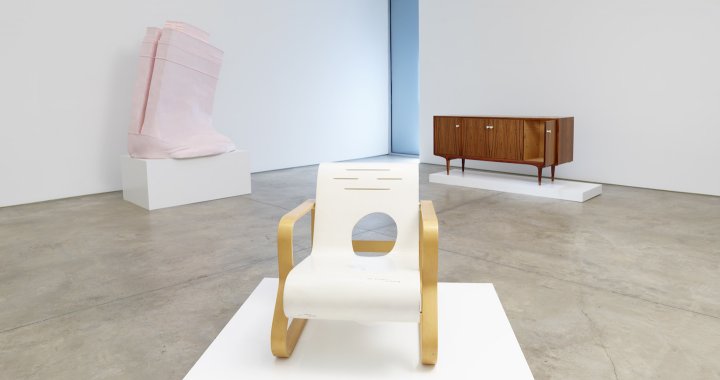
Erwin Wurm “Ethics demonstrated in geometrical order” in New York
Q&A with the artist Erwin Wurm about his solo show in New York
07/04/2017
Erwin Wurm “Ethics demonstrated in geometrical order”
Lehmann Maupin, New York
Through May 26, 2017
Last week the Lehmann Maupin gallery in New York announced Ethics demonstrated in geometrical order, an exhibition of new One Minute Sculptures by Austrian artist Erwin Wurm. This year marks the 20th anniversary of these audience-activated sculptures, which will also be the focus of Wurm’s installation for the Austrian pavilion in the 57th Venice Biennial. Wurm’s One Minute Sculptures have influenced a generation of artists by redefining what a sculpture is and how the public engages with the medium.
For the One Minute Sculptures featured in this exhibition, Wurm employs mid-century modern furniture as props. By asking for the audience’s participation in a way that could make them feel uncomfortable, One Minute Sculptures offer a moment of visceral introspection as a means of provoking an examination of one’s own insecurities, thus turning them into subversive “thinking sculptures.”
The necessity for explicit mimicry of Wurm’s directives is reflected in the artist’s title choice, Ethics demonstrated in geometrical order, evoking the 17th-century Dutch philosopher Baruch de Spinoza.
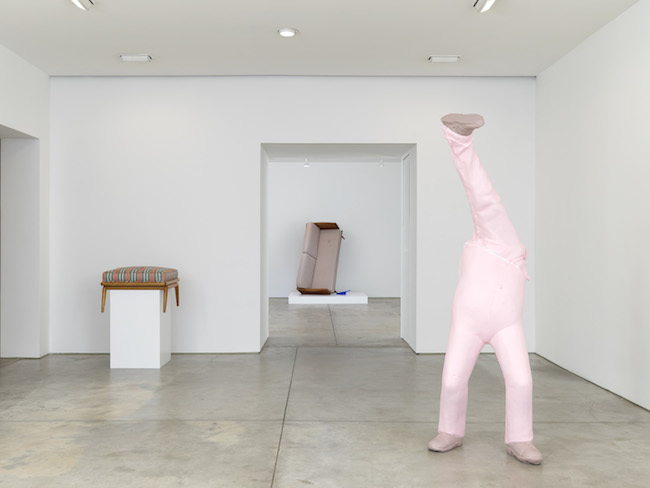
Erwin Wurm. Ethics demonstrated in geometrical order. Installation view, Lehmann Maupin (March 30 – May 26, 2017). Courtesy the artist and Lehmann Maupin, New York and Hong Kong. Photo: Elisabeth Bernstein
contacted Wurm to get more in-depth information on which pieces will be on view in the exhibition, as well as to probe the artist’s mind on why he presumes that 17th-century philosophical theories can be correlated to the current day.
Ethics demonstrated in geometrical order – you suggest that Spinoza’s approach can be taken and applied to simple situations right in the exhibition hall.
The title of the exhibition is related to one piece on view in the exhibition, and which is related to Baruch de Spinoza’s work. Considered a pioneer of the Enlightenment era, Spinoza’s magnum opus, Ethics (1677), premised the uncertainty of free will. At that time, he believed that instead of free will, there is God’s will. Nowadays, neurologists have arrived at the point of discussing the question of whether there is such a thing as free will, or if our actions are determined by genes and external conditions. And that is an interesting parallel, although it has a different indication.
The show in New York is basically a show of One Minute Sculptures, which I started to do 20 years ago.

Erwin Wurm. Head TV, One Minute Sculpture, 2016. Instruction drawing, Danish cabinet, and realized by public, 30.5 x 67 x 18.5 inches (sculpture), 77.5 x 170.2 x 47 cm, 3.94 x 78.74 x 23.62 inches (pedestal), 10 x 200 x 60 cm. Courtesy the artist and Lehmann Maupin, New York and Hong Kong. Photo: Eva Wuerdinger
Can we consider the New York exhibition as an illustration of some of Spinoza's propositions?
No, it is not an illustration. It just puts into discussion the idea of free will. Spinoza is an example of someone who also discussed free will and God’s will. Today, God’s will is connected to our existence only for a part of society. All of the Muslim community, which is growing in numbers in Europe, believes in God’s will much as Spinosa did. At the same time, the main target of the Western world is free will, which is based on our personalities. This is where a discrepancy appears.
For One Minute Sculptures, I ask people to give up their free will and to follow me, and to realize something according my instructions – it is about doing something on certain conditions.
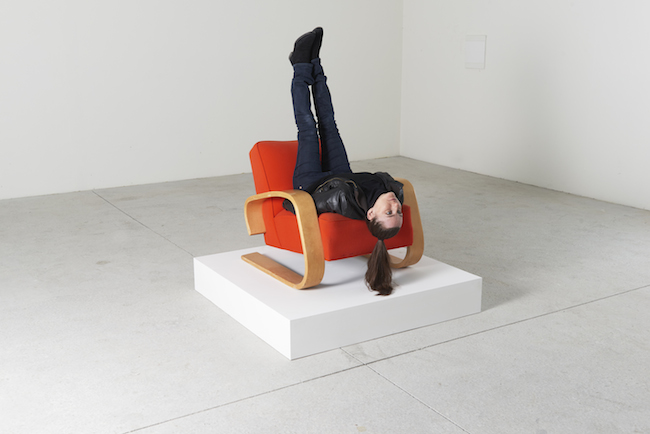
Erwin Wurm. Spaceship to venus, 2016. Instruction drawing, Aalto Tank lounge chair, model 37, and realized by public, 28.5 x 29.5 x 36 inches (sculpture), 72.4 x 74.9 x 91.4 cm, 3.94 x 51.18 x 78.74 inches (pedestal), 10 x 130 x 200 cm. Courtesy the artist and Lehmann Maupin, New York and Hong Kong. Photo: Eva Wuerdinger
You are also presenting new sculptural works in cast bronze and mixed media.
Yes; it is a mixture of ‘melting’ houses, including a ‘melting’ Flatiron building. It is interesting to bring them together because they all relate, in a way, to the same moment – to the method we apply to realize One Minute Sculptures: the idea of instructing someone, to be instructed by someone, or to follow an invitation to realize the piece.
At the Venice Biennale, I will have the same concept, but even more stretched out.
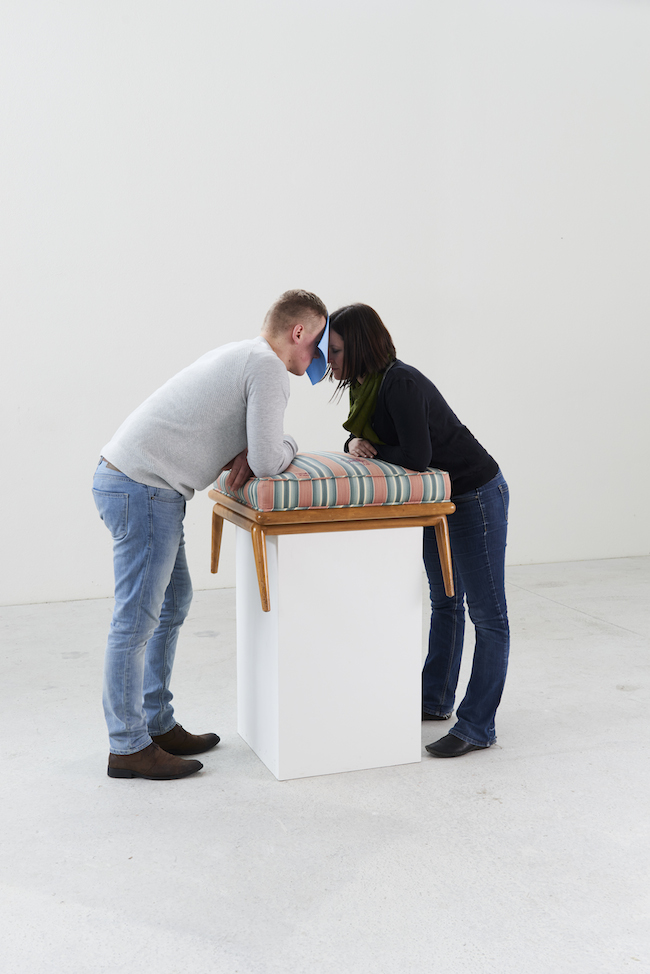
Erwin Wurm. Organization of Love, 2016. Instruction drawing, Robsjohn-Gibbings ottoman, and realized by public. 17.5 x 26.5 x 26.5 inches (sculpture), 44.5 x 67.3 x 67.3 cm, 31.5 x 19.69 x 19.69 inches (pedestal), 80 x 50 x 50 cm. Courtesy the artist and Lehmann Maupin, New York and Hong Kong. Photo: Eva Wuerdinger
Has anything changed over these 20 years – if you the compare the point in time when you started creating the One Minute Sculptures and nowadays?
There is a big difference. In the beginning, I asked the public to take a Polaroid photo when they did a One Minute Sculpture, and then I would sign it. So it also became a work about authorship – they would do something according to my instructions, i.e., they would do the piece, and then I would authorize it as one of my pieces through the act of signing the picture. Now, everybody can take a selfie with a mobile phone and put it on the Internet immediately, so the social aspect is much more involved. And it is so much about the people of this generation, who are a kind of self-paparazzi, watching themselves constantly.
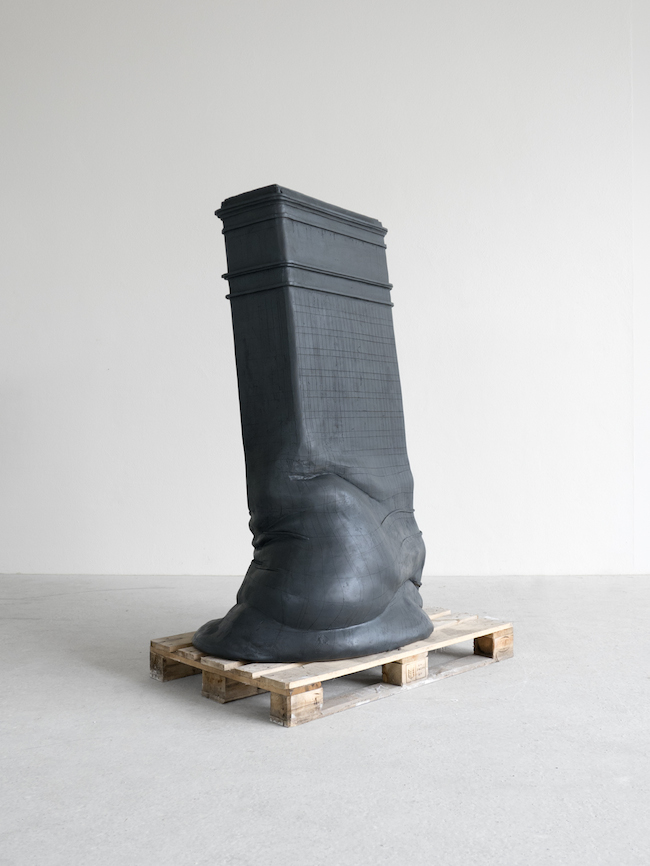
Erwin Wurm. Flat Iron, 2016. Bronze cast and patina, 66.93 x 23.62 x 43.31 inches, 170 x 60 x 110 cm. Courtesy the artist and Lehmann Maupin, New York and Hong Kong. Photo: Eva Wuerdinger
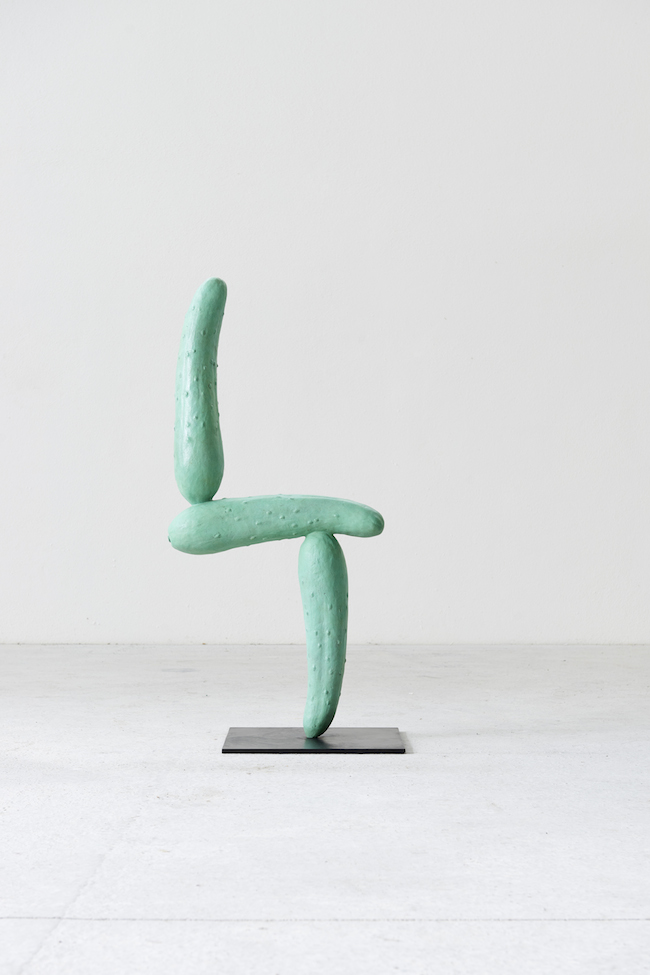
Erwin Wurm. Salatgurke modernistisch / Modernist Pickle, 2016. Bronze cast and patina, 40.94 x 19.69 x 5.91 inches, 104 x 50 x 15 cm. Courtesy the artist and Lehmann Maupin, New York and Hong Kong. Photo: Eva Wuerdinger
536 West 22nd Street, New York
www.lehmannmaupin.com